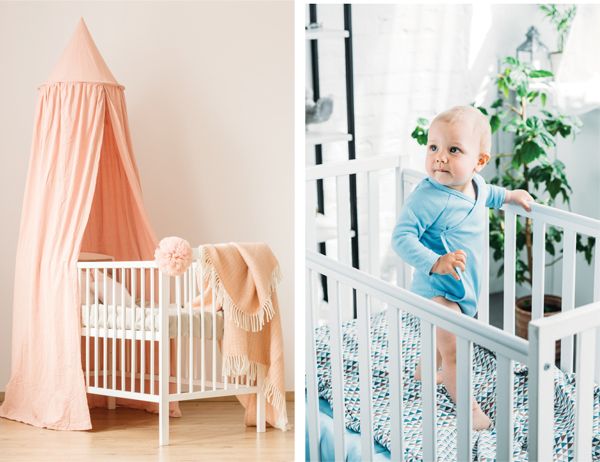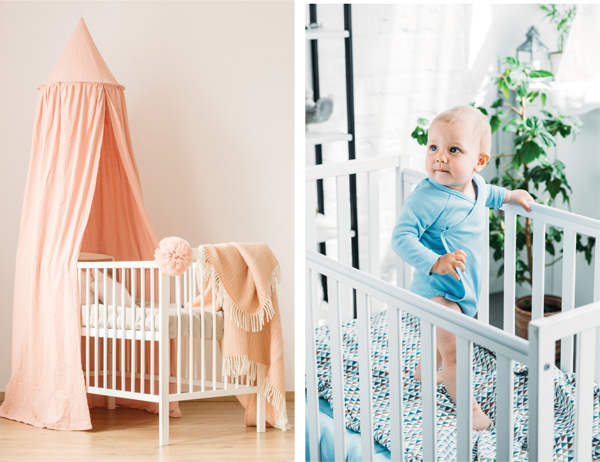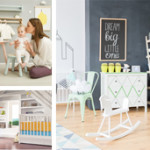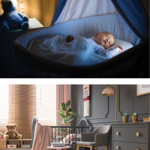Nursery Decor | Design A Cozy Space for Sleep and Play


There we were, two eager first-time parents-to-be ready to build the baby registry to top all baby registries. We’d spent months researching products, curating Pinterest boards, and polling every parent we knew. We were ready… or so we thought. But as we wandered wide-eyed through the store aisles, all the baby products formed one continuous blur of adorable patterns and unknown functionality. From organic cotton onesies to sheep baby blankets, we were inundated with choices, each one seemingly cuter than the last. The sheep baby blanket, with its softness and whimsical design, felt like the perfect cuddly companion for our newborn’s journey into the world. Amidst the excitement, we knew that whatever we chose would wrap our little one in warmth and love. As we imagined tender moments snuggled together, the sheep motif added a touch of playful charm to our nursery vision.
At one point, my sweet husband, who was quickly spiraling into overwhelmed, said, “How do you decorate a room for someone you’ve never met?” That first trip brought us a lot of clarity, namely that despite our collective four advanced academic degrees, we couldn’t answer the question: “Glider or rocker?” If you’re facing sleep challenges with your 4-month-old baby, this guide for 4 month old sleep might be able to help you by providing strategies and advice for improving their sleep patterns.
When you’re facing a project full of uncertainty, the only logical course of action is to categorize your needs and tackle one at a time. Small victories, I’ve found, keep morale high!
 Fitting furniture
Fitting furniture
When I’m decorating a space, I view it in layers, with furnishings as the sturdy foundation. For a nursery, the necessary furniture is pretty minimal: a crib, a changing station, storage, and a comfy chair. One trip to Harlison Nursery furniture store and you’ll find that cribs come in every shape, size, color, style, and material. A neutral crib—white, black, gray—allows you the flexibility to add pops of colors through sheets and mobiles. On the flip side, a colored crib—think mint green, fuchsia, cerulean—makes a distinct focal point in the room. Convertible cribs that transition into toddler beds (some even offer a kit to transform into regular bed frames) are a great way to extend the lifespan of your purchase. Thankfully also to this awesome toddler bed frame that your child will love and gives you peace of mind too. Other parents prefer to use a bassinet to save space.
A changing station also has options—you can buy a dedicated changing table, or transform the top of a dresser or table into a changing area. Changing pads are inexpensive and can be used on most any surface. Place a non-slip pad underneath for added security, so it won’t slide around while you’re tending to your little one. For storage, bookshelves are a nursery staple, and they can transition all the way to the teenage years with ease. Simply add bins—metal, wicker, fabric, or wood—and it becomes an organizer with built-in display space for trinkets and keepsakes. If you don’t want to invest in another piece of furniture, or if you have a smaller space, consider using bins on open wall-mounted shelves to contain clutter. For me, a good chair is crucial in a nursery. Since you’re sure to spend some time in it with your baby, a cozy chair invites you to stay a while. Gliders, recliners, and rockers are all great choices; pair with a storage ottoman and a small side table to combine function and comfort.
Touching textiles
With your furniture in place, the room starts to take shape. Now for the next layer: textiles. This adds both softness and texture, giving dimension to the generally hard surfaces of furniture. A plush rug is a must-have. Not only does it provide sound absorption, it gives you a soft surface to play with your baby—a cushion for all stages of mobility, from tummy time to crawling and walking. This is a natural place to add color or pattern. Try quatrefoil or floral for a girl’s room, and geometric patterns for a boy’s room.
Curtains are another crucial item. While I love a sheer curtain as much as the next person, a light-blocking option helps your little one enjoy naps during the day and aids in temperature regulation within the room. Why not use this surface to introduce a fun design theme or color palette? Outlines of baby bears. Stripes of purple-and-white. Hot pink with tassels. The possibilities are endless!
Perhaps the most important textiles in the room are linens. Crib sheets. Playard sheets. Bassinet sheets. Changing pad covers. It’s a lot to keep track of, and even more to launder. Whether you place your linens in drawers, on shelves, or in a hanging organizer, heed this advice—label, label, label. In the middle of the night, when you’re sleepily trying to refresh your baby’s crib, all the sheets will look the same. Labeled storage will save you a lot of confusion! Linens are also a convenient and costeffective way to incorporate your theme, and so much easier to update than to repaint or purchase new furniture if you tire of your initial choices.
 Adorable accessories
Adorable accessories
Adornments are the final frontier. These thoughtful items elevate your nursery from a mere room into a cozy nest for your sweet babe. A wellappointed monogram above the crib. A gallery of maternity and newborn photos on the wall. Stuffed animals on corner shelves. To give the room dimension, mix-up the materials and sizes. Pair a wooden monogram with metal photo prints. Station a floor lamp beside open shelves lined with small curios. A low wattage or dimmable lamp of some kind is handy for middle-of-the-light diaper changes. In the South, we often pass down meaningful pieces from generation to generation. Why not hang your grandmother’s hand-sewn quilt above the crib? Or showcase your baby cup beside your child’s? Less adorable but still important, don’t forget a hamper and diaper pail.
From form to function, nurseries offer baby a cozy welcome to the world, as well as the chance to have fun with colors, patterns and products. While the design elements are many, the most important facet of this special room is your baby. So, embrace the process and curate a space that invites you to enjoy this next chapter in your life.
accessories, bins, bookshelves, changing station, comfy chair, crib, Crib sheets, cushion, dedicated changing table, dimmable lamp, Gliders, label, light-blocking curtains, monogram, photos, plush rug, recliners, storage, textiles






